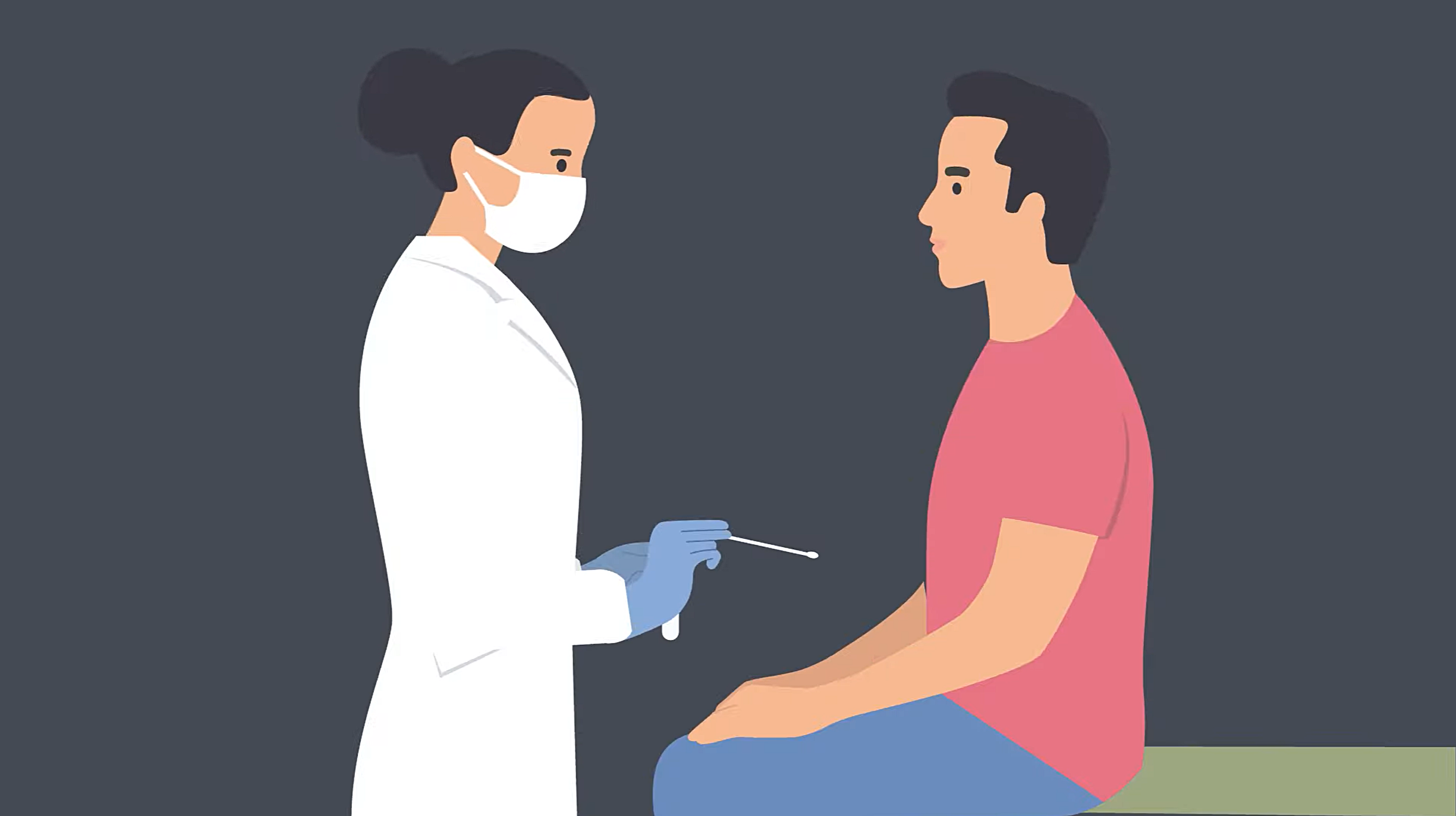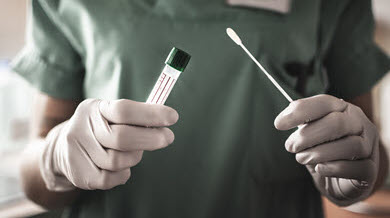Recommendations for Fully Vaccinated People
COVID-19 Homepage
COVID-19 Testing: What You Need to Know
- Make sure to test at the right time
- Choose the right type of test for your circumstance
- Follow test directions as recommended by FDA
If you do not, your results may be less likely to correctly indicate whether you have COVID-19 or not.
Types of Tests
Viral tests look for a current infection with SARS-CoV-2, the virus that causes COVID-19, by testing specimens from your nose or mouth. All tests should be performed following FDA’s requirements.
There are two main types of viral tests:
- Polymerase Chain Reaction (PCR) tests
- Antigen tests
PCR Tests

PCR tests are the “gold standard” for COVID-19 tests. They are a type of nucleic acid amplification test (NAAT), which are more likely to detect the virus than antigen tests. Your sample will usually be taken by a healthcare provider and transported to a laboratory for testing. It may take up to 3 days to receive results.
Antigen Tests

Antigen tests* are rapid tests that usually produce results in 15-30 minutes. Positive results are very accurate and reliable. However, in general, antigen tests are less likely to detect the virus than PCR tests, especially when symptoms are not present. Therefore, a single negative antigen test cannot rule out infection. To be confident you do not have COVID-19, FDA recommends 2 negative antigen tests for individuals with symptoms or 3 antigen tests for those without symptoms, performed 48 hours apart. A single PCR test can be used to confirm an antigen test result.
*Self-tests, or at-home tests, are antigen tests that can be taken anywhere without having to go to a specific testing site. Read self-test package inserts thoroughly and follow the instructions closely when performing the test.
Read more: Self-Testing At Home or Anywhere
When to Get Tested for COVID-19

Key times to get tested:
If you have symptoms, test immediately.
- If you are only going to take a single test, a PCR test will provide a more reliable negative test result.
- If you use an antigen test, a positive result is reliable, but a negative test is not always accurate.
- If your antigen test is negative, take another antigen test after 48 hours or take a PCR test as soon as you can.
If you do not have symptoms but have been exposed to COVID-19, wait at least 5 full days after your exposure before taking a test.
- If you are only going to take a single test, a PCR test will provide a more reliable negative test result.
- If you use an antigen test, a positive result is reliable, but a negative test is not always accurate.
- If your antigen test is negative, take another antigen test after 48 hours or take a PCR test as soon as you can.
- If your second antigen test is also negative, wait another 48 hours and test a third time.
Testing can be helpful even when you don’t have symptoms or a recent exposure to COVID-19, such as before an event or visiting someone at higher risk. Test as close to the time of the event as possible (at least within 1-2 days) to help you make informed decisions about your health and your risk of spreading COVID-19 to others. If you use an antigen test, follow recommendations for repeat testing to be confident in a negative result. Additionally, some places may test people without symptoms or a recent exposure to help keep COVID-19 from spreading to others, especially those who are at higher risk for severe illness.
You may choose a PCR or antigen test.
If you use an antigen test and your result is negative, repeat testing following FDA recommendations.
30 days or less
I have symptoms
Use an antigen test. Repeat negative tests following FDA recommendations.
I do not have symptoms
Testing is not recommended to detect a new infection.
31-90 days
I have symptoms
Use an antigen test. Repeat negative tests following FDA recommendations.
I do not have symptoms
Use an antigen test. Repeat negative tests following FDA recommendations.
After a positive test result, you may continue to test positive for some time. Some tests, especially PCR tests, may continue to show a positive result for up to 90 days. Reinfections can occur within 90 days, which can make it hard to know if a positive test indicates a new infection. Consider consulting a healthcare provider if you have any questions or concerns about your circumstances.
Getting a COVID-19 Test
Buy self-tests (at-home tests)
Buy self-tests (at-home tests) online or in pharmacies and retail stores. Private health insurance may reimburse the cost of purchasing self-tests. Visit FDA’s website for a list of authorized tests. Self-tests are antigen tests.
Go to a testing location
- Visit a community-based testing location, such as a pharmacy or health center near you. These locations may offer PCR or antigen tests, and provide low- or no-cost testing for everyone, including people without insurance. Free PCR or antigen tests may also be available through your local health department.
- Talk to a doctor or healthcare provider about other testing options that may be available to you.
- If you are a person with a disability, the Disability Information and Access Line can help you access a test or find a test location.
Interpreting Your Results
Positive
Any positive COVID-19 test means the virus was detected and you have or recently had an infection.
- Isolate and take precautions, including wearing a high-quality mask or respirator, to protect others around you from getting infected.
- Tell people you had recent contact with that they may have been exposed.
- Monitor your symptoms. If you have any emergency warning signs, seek emergency care immediately.
- Contact a healthcare provider, community health center, or pharmacy to learn about treatment options that may be available to you. Treatment must be started within the first few days to be effective.
- You are more likely to get very sick if you are an older adult or have an underlying medical condition. Treatment is available. Talk with your healthcare provider to determine what is the best option for you.
Negative
A negative COVID-19 test means the test did not detect the virus, but this doesn’t rule out that you could have an infection. If you used an antigen test, follow FDA recommendations for repeat testing.
- If you have symptoms:
- You may have COVID-19 but tested before the virus was detectable.
- Consider that you may have another viral infection or illness that you need to get tested for. For many diseases, including flu, early diagnosis and prompt treatment is very important for preventing severe illness.
- Take everyday preventive actions to prevent spreading an illness to others.
- Contact a healthcare provider if you have any questions about your test result or if your symptoms worsen.
- If you do not have symptoms but were exposed to the virus that causes COVID-19, you should continue to take recommended steps after exposure.
- If you do not have symptoms and have not been exposed to the virus that causes COVID-19, you may return to normal activities.
- Continue to take steps to protect yourself and others, including monitoring for symptoms. Get tested again if symptoms appear.
Testing for Antibodies
Antibody tests detect antibodies that your body makes to fight the virus that causes COVID-19. Antibody tests should never be used to diagnose a current infection with the virus that causes COVID-19. An antibody test may not show if you have a current infection, because it can take 1 to 3 weeks after the infection for your body to make antibodies. Antibody tests can be used for public health surveillance or to test for conditions associated with COVID-19.
Testing Resources for Healthcare Professionals: Healthcare Workers | Health Departments | Labs